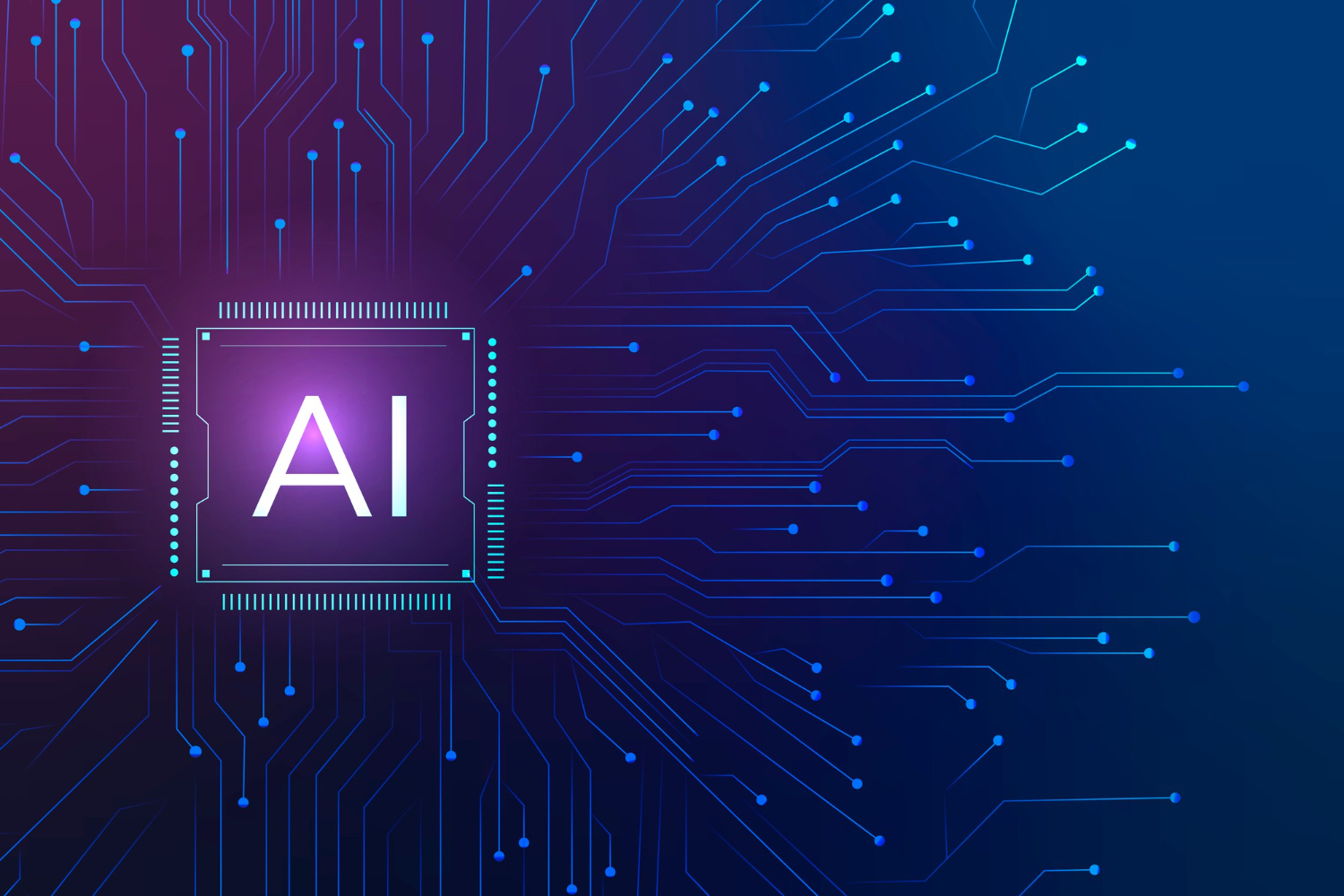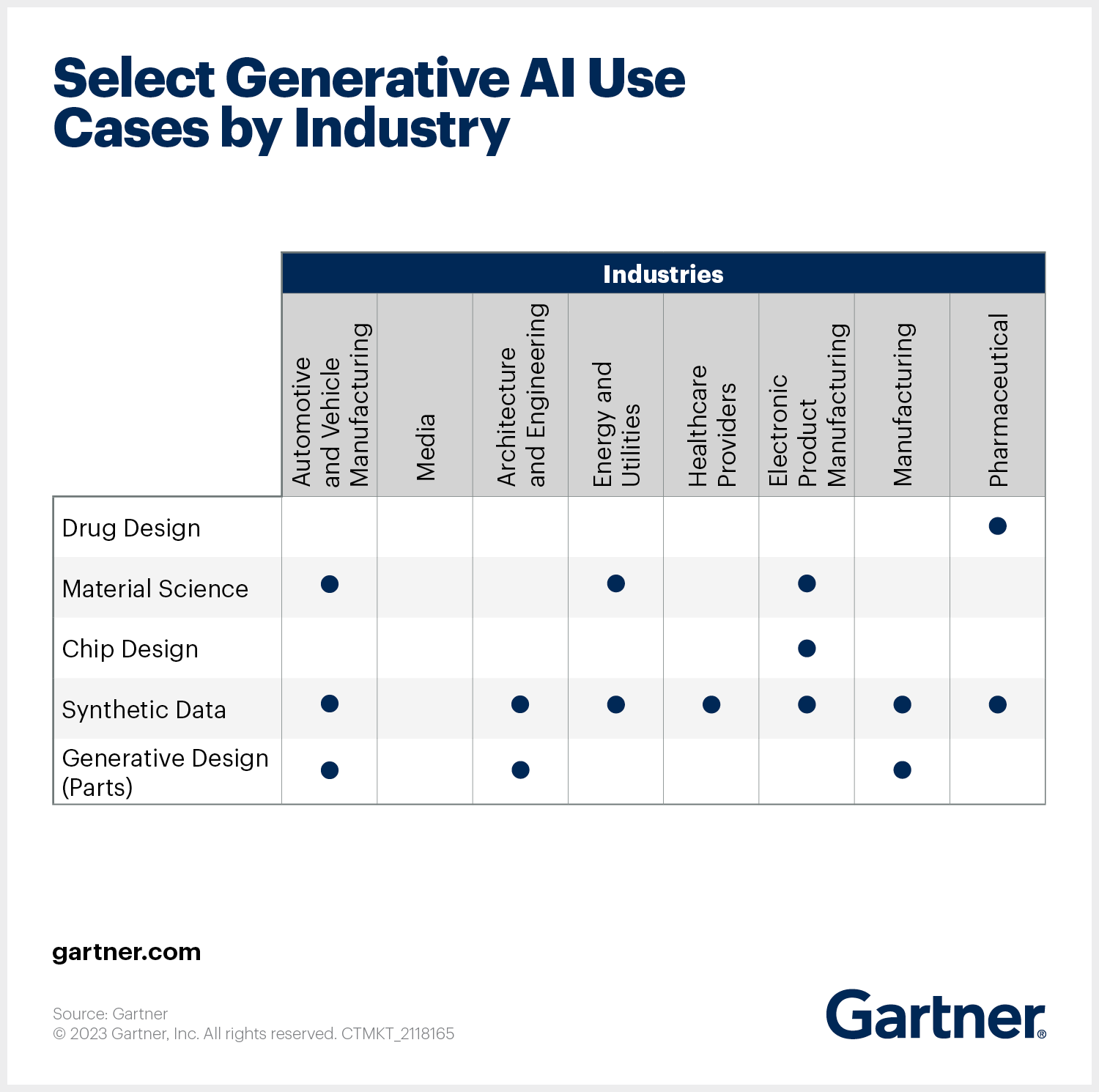Top 10 Generative AI Trends to Watch Out for In 2024

"Artificial intelligence will reach human levels by around 2029. Follow that out further to, say, 2045; we will have multiplied the intelligence, the human biological machine intelligence of our civilization a billion-fold."
- Ray Kurzweil
If we were to look at how popular dictionaries define Artificial Intelligence (AI), the summary of those definitions would come to these three points:
A branch of computer science;
That simulates human intelligence;
To perform various tasks like content generation, speech recognition, translation, and more.
Generative AI is when a new form of content is "generated" through prompts. At its core, generative AI analyzes large data sets to perform tasks. The introduction of ChatGPT has made generative AI famous around the globe.
Here's an interesting prediction from Gartner about generative AI. By 2030, a major blockbuster film will be released using AI to generate 90% of its content!
However, this definition of generative AI stands true today. Tomorrow, with its evolution happening at the speed of light, it can change drastically. How will it change? Let's find out.
Table of Contents
Generative AI Trends in 2024
We'll get straight to the point. Generative AI trends show that it will be used in material science, drug design, parts design, and synthetic data derived after real-world observations, among other areas.
Here's an interesting insight by Gartner.

AI has been around for a long time. However, it has only become popular now due to the recent developments in neural networks and deep learning. As it starts to dominate the world today, what can we expect? This article will dive deep into the top generative AI trends one can expect in 2024.
10 Prevalent Trends in Generative AI
As we face 2024, here are a few key AI trends we can witness this year. They can be adapted for multiple sectors globally.
Improved Natural Language Generation
A large amount of unstructured language data has fuelled the need to develop natural language processing (NLP) technology applications. For example, chatbots cannot completely replace human customer service representatives as they are not yet trained to decipher unstructured data and semantics.
In 2024, we will see improved NLP technology as one of the latest AI trends for virtual assistants, sentiment analysis, named entity recognition (NER), multilingual models, semantic search, conversational AI, and reinforcement learning.
For example, a startup called Y Meadows automates customer support by identifying the intent of the data (emails, web forms, etc.) instead of focusing on keywords (a common tool for chatbots today) or predefined decision trees. They aim to improve the customer experience.
Beyond Image Generation
While applications such as DALL-E 2 or Imagen are already dominating the image generation market using generative AI technology, we will see improved results shortly. The AI models will consider more parameters, create photorealistic images and handle multiple concepts simultaneously.
These image-generating models may soon do more than support the content industry. A startup called Alethea AI uses generative AI models and blockchain to create interactive AI characters that can be traded as intelligent NFTs.
A To Z Video Production
Algorithmic creativity through generative AI can disrupt the video production industry. AI will produce everything from A to Z, like virtual environments, special effects, character animations, and more. GenAI startups can also use AI to gather data about viewer behaviors to aid certain business models.
Vidtext, a Spanish startup, uses text-to-video generation, eliminating the need for shoots, actors, or expensive equipment. It can create 3D avatars with custom templates in forty different languages. These videos can be used for various applications like marketing or eLearning.
Advancement In Scientific Research
One of the most interesting generative AI trends is where large language models (LLMs) can be used to generate a novel hypothesis across various areas of science. It can also develop accurate data models to use in disciplines such as astronomy and chemistry.
It can be used in drug discovery, material science, environmental monitoring, aerospace engineering, and energy research. A startup called Cervest is creating its own AI models to help the planet adapt to climate volatility. Or Rahko, another startup, is using AI to make progress in its quantum discovery efforts for chemical simulation.
Speech Synthesis
While we have text to voice generation taking the internet by storm, it is expected to get multilingual and realistic in the coming months. AI will also enable character voices and use speech synthesis to provide materials like audiobooks, podcasts, and learning materials.
For example, Murf Studio offers lifelike AI voices for multiple uses. It allows the user to control the tone, pitch, and style of the voice. Voice cloning is predicted to adapt to complex instructions and be able to bring about emotional variations as well.
Autonomous Game Development
AI can be programmed to enhance the gaming experience using algorithms such as Minimax into Machine Learning (ML). AI-assisted game development will give smaller studios an edge in the gaming industry by reducing resource utilization.
Self-learning AI can also change how a player interacts with a game by responding to real-time player feedback. rct AI has a product called Chaos Box, an AI engine that uses deep reinforcement learning to produce new plotlines dynamically.
Generative Music
Not only are AI tools expected to automate mixing and mastering efficiently, but they can also generate original music based on the prompts provided by a user. Moreover, these generative AI apps are copyright-free and are expected to become one of the most significant generative AI trends.
Purilian, an Italian startup, generates music to avoid diverting the attention of buyers in retail stores and for marketing automation. It can adapt to a store's environment and traffic and drive significant traction.
Advancement in Generative Adversarial Networks (GANs)
A GAN currently uses two neural networks to generate data. It powers most of the currently-used generative AI tools. While it is being used for super-resolution, image generation, and video production, it can also be used for purposes like image completion, generating new or experimental treatments for existing diseases, anomalous tissue detection, semantic manipulation, and more.
Alchemab, for example, is a biotech startup using GANs to discover and develop protective antibodies that occur naturally in human bodies and immune repertoire-based tools.
Enhanced Cybersecurity
The most obvious of the AI trends would be its use in cybersecurity. NLP-powered code generators can facilitate non-technical teams to carry out complex coding tasks using LLM and transformer-based models. This works along the lines of the trending "low code, no code" concept.
These generative AI applications can allow for software upkeep and code analysis to reduce high-risk cybersecurity issues. Generative AI can generate simulated environments for predictive modeling by analyzing unstructured data. This can help in threat identification and prevention.
Addressing Ethical Considerations
With the democratization of AI, many ethical issues have cropped up. Concerns about data privacy, copyright infringement, AI bias, and transparency are just a few that the latest AI trends must overcome.
As the generative models evolve, these issues to regulate AI are expected to be addressed. For example, startups such as Fiddler AI use PaaS that monitors for bias and inaccuracies at the time of deployment using Responsible AI or Explainable AI (XAI) algorithms.
Dark Trace, another startup, makes calculations and spots patterns after monitoring, creating data that ML algorithms can use. This can help organizations identify any deviations and identify threats.
AI: The New Superpower?
It is a well-known fact that AI has the power to transform multiple industries with its extensive applications. However, it will have a different meaning a decade later than what it has today due to its evolving nature. It may pass the famous Turing Test soon, as some AI apps like Google's LaMDA have purported to.
Whether at home or work, AI will transform almost everything in our personal and professional lives due to its magnitude and velocity. When used ethically and when we can navigate through AI's challenges like inaccuracies, bias, and discriminatory outcomes, it can truly elevate our lives. The question remains, are we ready for it?
FAQs
What is the next big trend in AI?
Fuelling hyper-automation in various business sectors, computer vision, edge computing, quantum computing, augmented reality, and digital twinning are the next big trends in AI.
Another big trend in AI would be to drastically improve all eight separate bits of intelligence logical-mathematical, linguistic-verbal, visual-spatial, musical-rhythmic, bodily-kinesthetic, interpersonal, intrapersonal, and existential.
What are the improvements for AI in 2024?
In 2024, AI has made leaps and bounds in decision-making, robotic process automation, ML, speech recognition, personalization, biometrics, deep learning, and natural language processing. It has brought in disruptive technology for developing, podcasting, translation, and other personal tasks like event planning and Q&A, among others.
What are the current AI trends?
Current AI trends are majorly in the generative AI space, like video, image, text, music, and voice content generation. However, it is also being used for marketing, customer service, healthcare, and autonomous game development. It is also being used for data analysis, social media posts, and language models by companies of different sizes.



